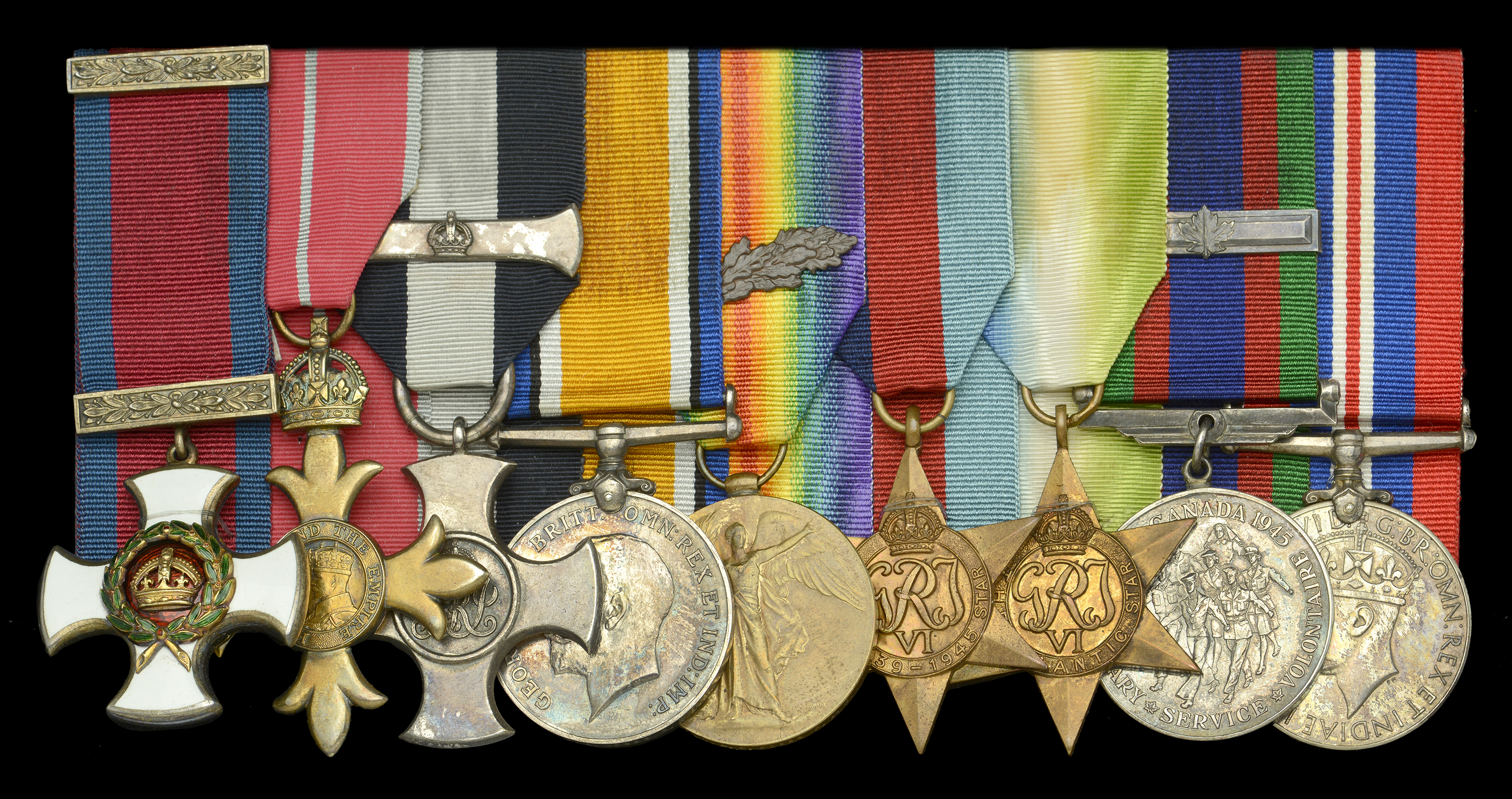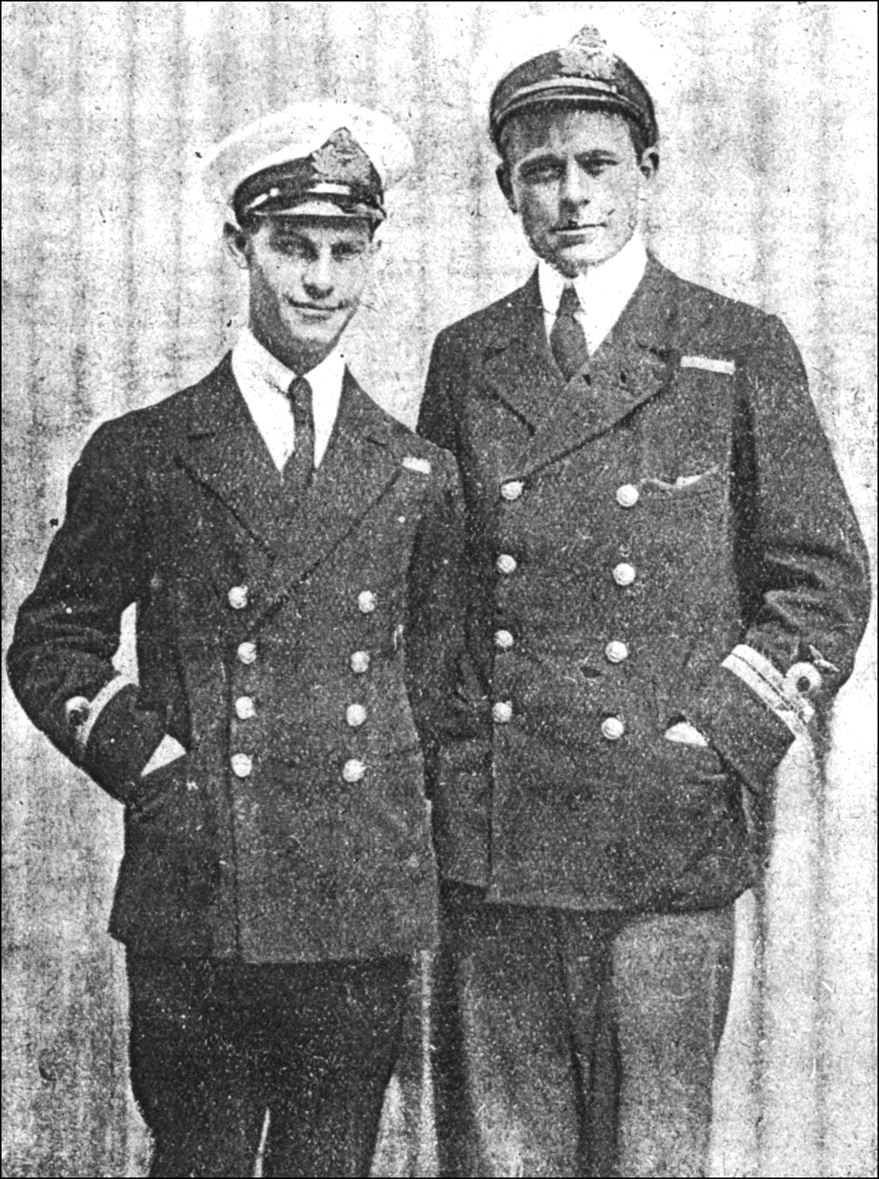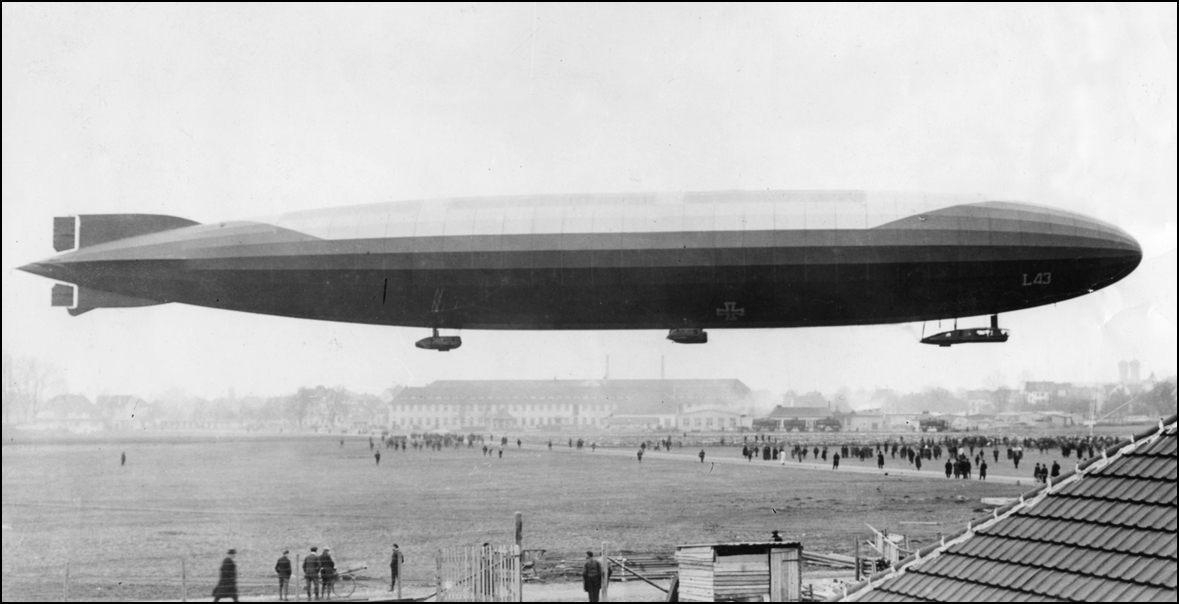The important Great War D.S.O., D.S.C. and Bar, Second World War O.B.E. group of nine awarded to Group Captain B. D. ‘Billiken’ Hobbs, Royal Canadian Air Force, late Royal Naval Air Service, who, in a matter of months, was credited with the confirmed destruction of the Zeppelin L. 43, the sinking of the UC-6 and the probable sinking of another enemy submarine - the whole as a pilot of Large American Seaplanes operating out of Felixstowe’s famous ‘Spider’s Web’ His family having moved to Canada in 1900, he was taught to fly at his own expense in 1912 by a certain Orville Wright, became the most decorated pilot of the ‘Aero Club of America’ to have joined the British flying services, and went on to complete the first trans-Canada flight before becoming a founder member of the Royal Canadian Air Force Distinguished Service Order, G.V.R., silver-gilt and enamels, with integral top ribbon bar; The Most Excellent Order of the British Empire, O.B.E. (Military) Officer’s 2nd type breast badge, silver-gilt; Distinguished Service Cross, G.V.R., with Second Award Bar, hallmarked London 1917, the reverse privately engraved, ‘Flt. S. Lieut. Basil D. Hobbs, D.S.O. R.N.A.S. 22 June 1917’; British War and Victory Medals, with M.I.D. oak leaves (Flt. Lt. B. D. Hobbs, R.A.F.); 1939-45 Star; Atlantic Star; Canadian Voluntary Service Medal 1939-45, with overseas clasp; War Medal 1939-45, silver, mounted court-style as worn, the first with loose obverse centre, otherwise generally good very fine (9) £16,000-£20,000 --- Importation Duty This lot is subject to importation duty of 5% on the hammer price unless exported outside the UK --- --- Provenance: Exceptional Naval and Polar Awards formed by R. C. Witte, Dix Noonan Webb, December 2007. D.S.O. London Gazette 20 July 1917. O.B.E. London Gazette 14 June 1945. The original recommendation states: ‘Group Captain Hobbs has served with distinction throughout an extensive period of war service. As Commanding Officer of Royal Canadian Air Force Station, Patricia Bay, he has carried out his duties in an exemplary manner. At all times he has given his best to the service and all personnel under him have profited by his experience, good judgement, and fine leadership. This officer's record throughout his career has been outstanding. By his splendid devotion to duty, initiative, and efficiency he has rendered highly meritorious service to the Royal Canadian Air Force.’ D.S.C. London Gazette 22 June 1917. Bar to D.S.C. London Gazette 30 November 1917: ‘For services in action with enemy submarines.’ Basil Deacon ‘Billiken’ Hobbs was born in Reading, Berkshire on 20 December 1894, and was educated at the Public and High Schools of Sault Saint Marie in Ontario, where his family had settled as farmers in 1900. A keen student of early aviation, he obtained lessons from Orville Wright at Dayton, Ohio, paying the master pilot a rate of one dollar a minute for his expertise, and notching up a grand total of four hours’ flying time before enrolling as a trainee in the ‘Aero Club of America’. With the advent of hostilities in August 1914, he made his way to the U.K. and joined the Royal Naval Air Service, and qualified for his “Wings” in December 1915. Having then been commissioned as a Flight Sub-Lieutenant, he qualified on American Large Seaplanes and went operational out of Felixstowe in early 1917, gaining his first D.S.C. for a U-Boat claim on 12 March. Indeed his ensuing operational career with Felixstowe’s famous ‘Spider Web’ seaplane patrol would witness several highly successful encounters with the enemy, but none would match up to the magnitude of the results he achieved on the night of 14 June: ‘I have the honour to submit the following report of a Zeppelin patrol carried out in Large American Seaplane No. 8677 this morning. In accordance with your orders, we proceeded at 5.15 a.m. B.S.T. and at 7.30 a.m. after making good course 72 magnetic, we sighted the Dutch coast at Vlieland, where we altered course for Felixstowe. At 8.40 a.m., we were again over Vlieland at 500 feet when we sighted a Zeppelin five miles away on our starboard bow at about 1,500 feet, steering due North. Its approximate position was 53 20 N. 4 40 E. We at once proceeded to attack at full speed, climbing 2,000 feet. Flight Lieutenant B. D. Hobbs was piloting the machine, Sub-Lieutenant R. F. L. Dickey manned the bow gun, W./T. Operator H. M. Davis (A.M. II, 20254) manned the midship gun, and A.M.T. (Engineer) A. W. Goody (F. 12237) manned the stern gun. As we approached the Zeppelin, we dived for her tail at about 100 knots. Her number L. 43 was observed on the tail and bow, and also a Maltese Cross in a black circle. The midship gun opened fire with tracer ammunition, and when about 100 feet above Sub-Lieutenant Dickey opened fire with Brock and Pomeroy ammunition as the machine passed diagonally over the tail from starboard to port. After two bursts the Zeppelin burst into flames. Cutting off engines we turned sharply to starboard and passed over her again. She was by this time completely enveloped in flames and falling very fast. Three men were observed to fall out on her way down. Flames and black smoke were observed for some time after wreckage reached the water. We then set course for Felixstowe arriving at 11.15 a.m.’ (Hobbs’ official report, refers). So ended the three-month career of Zeppelin L. 43, Hobbs being awarded the D.S.O., Dickey the D.S.C., and Davis and Goody D.S.M.s. On 17 June, once more in American Large Seaplane No. 8677, with Flight Sub-Lieutenant R. F. L. Dickey as 2nd pilot and gunner, Hobbs probably destroyed an enemy seaplane off the coast of Vlieland: ‘The hostile machine maintained a continuous machine-gun fire and circled round attempting to get under the rail of our seaplane, which, however, successfully outmanoeuvred the enemy machine, and opened fire with both forward and rear guns. Several bursts were observed to penetrate the fuselage and others to take effect on the nose and tail of the machine. The enemy Observer disappeared from view, presumably wounded, the firing ceased and the machine broke off the action, pursuing an erratic course to the eastward, firing two red signal lights, and was lost to view close to the water ... ’ (R.N.A.S. operational report No. 36, for the period 16-30 June 1917. refers). Another ‘probable’ was claimed by Hobbs and Dickey in No. 8677 on 15 September, on this occasion an enemy submarine. R.N.A.S. operational report No. 41 for the period 1-15 September 1917 takes up the story: ‘Large American Seaplane No. 8677 left Felixstowe at 0645 on a convoy patrol and at 0730 the conning tower of a hostile submarine was sighted at a distance of not more than half a mile, and almost in a direct line with the seaplane’s course. The submarine appeared to be rising, but must have sighted the seaplane, as it commenced to submerge almost immediately. It was steering due North, and the conning tower, painted a very light grey colour, was clearly visible. The seaplane, which was flying at a height of 1,000 feet, and at a speed of 60 knots, increased its speed to 80 knots, and, flying over the submarine, the conning tower of which was still showing, released two 230lb. bombs. Both bombs were observed to explode in the centre of the wash, about 10 feet ahead of the conning tower (which by this time was submerged) and in line with it. The seaplane circled for some time, and observed a large patch of dark brown oil, which seemed to spread very quickly, calming the water - which was very rough ...












